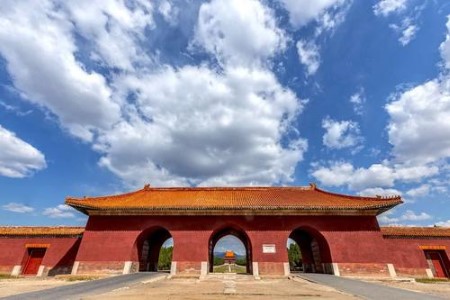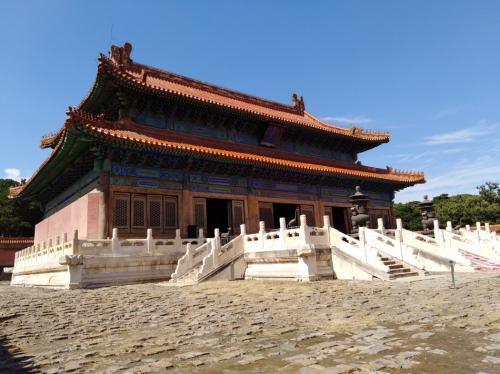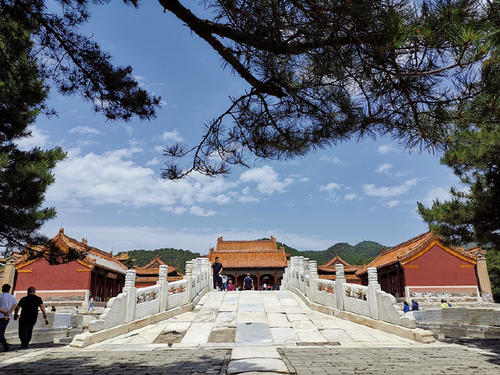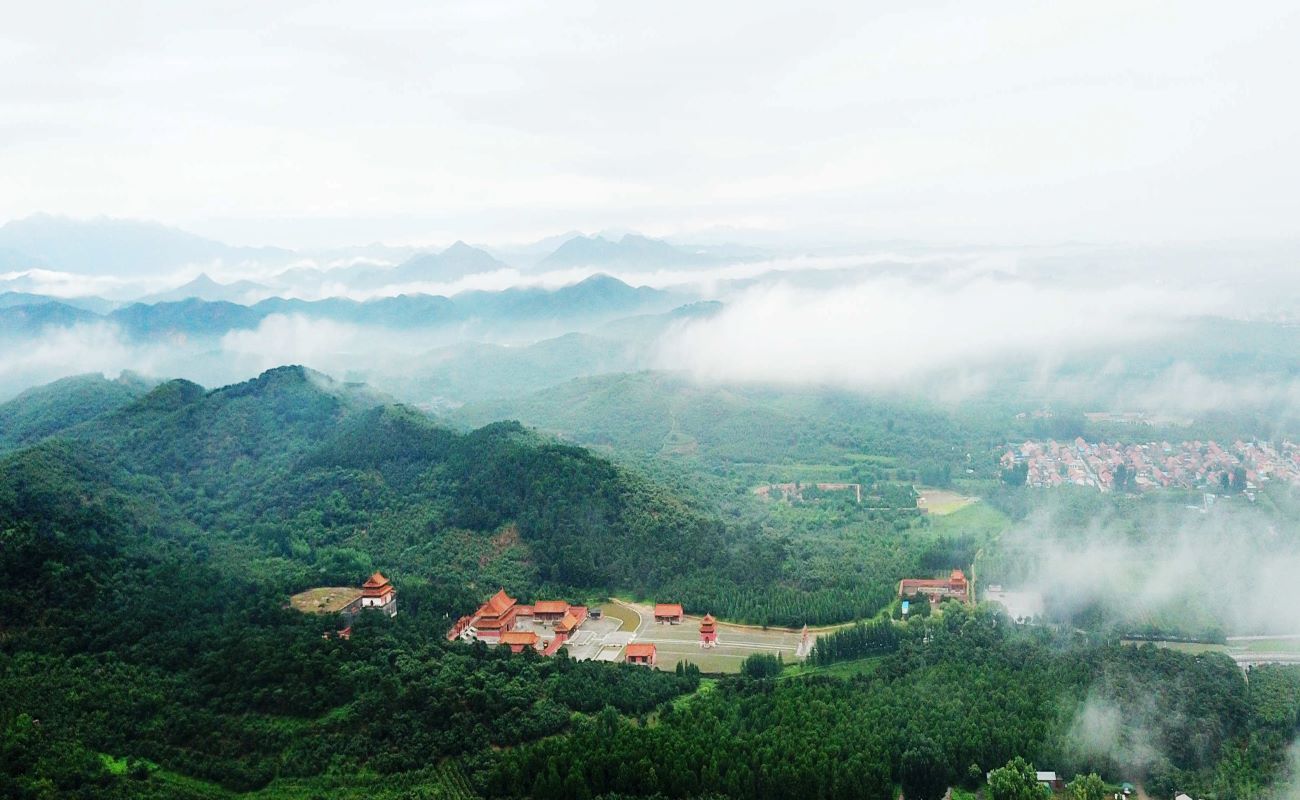Chinese Name: 清东陵 Pronunciation: qīng dōng líng
Building Time: 1661
Recommended Time for Visit: 3-5 Hours
Building Function: Offer sacrifices to ancestors
Occupied Area: About 80 square kilometers
Best Visiting Season: Summer to Autumn (April to October)
Address: West Liupanying Village, Shimen Town, Zunhua, Tangshan City, Hebei Province
| Contents | Peak Season (April 1st to October 31st) |
Low Season (November 1st to March 31st) |
|
Ticket Package
(including Xiaoling Mausoleum, Yuling Mausoleum, Yufei Tomb, Cixi Tomb, Jingling Mausoleum)
|
108 yuan | 80 yuan |
|
Single Ticket
(Yuling Mausoleum or Cixi Tomb)
|
60 yuan | 40 yuan |
| Sightseeing Car Cycle Ticket | 30 yuan | 30 yuan |
| Worship Ceremony | 30 yuan | None |
1. Free for children under 1.2 meters (including 1.2) or under 6 years old (including 6), seniors over 70 years old (including 70), active servicemen, disabled servicemen, and disabled persons (including one caretaker with free ticket allowed for accompanying one disabled person with grade I or II severe physical disability, blind, intellectual disabled or mental disabled) with valid certificates.
2. Free for the award winner of voluntary blood donation and ex-servicemen with valid certificates.
3. Seniors aged 60-69, minors under 18 years old (including 18), and full-time students with college degrees or below, with their valid certificates, purchase ticket package of 54 yuan per person.
4. The disabled enjoy the half price of a sightseeing car cycle ticket.
| Opening Hours |
Peak Season
(April 1st to October 31st)
|
Low Season
(November 1st to March 31st)
|
| All the spots | 8:00am - 5:00pm | 8:30am - 4:00pm |
| Worship Ceremony | 9:30am-10:00am, 10:30am-11:00am, 2:00pm-2:30pm, 3:30pm-4:00pm | |

Located in Tangshan City, Hebei Province, the Eastern Qing Tombs is a national 5A tourist attraction. It boasts one of the most magnificent, integrated and reasonably distributing imperial mausoleums in China and the world cultural heritage as well.
The Eastern Qing Tombs covers an area of 80 square kilometers, consisting mainly of five imperial mausoleums (the Xiaoling Mausoleum of Emperor Shunzhi, the Jingling Mausoleum of Emperor Kangxi, the Yuling Mausoleum of Emperor Qianlong, the Dingling Mausoleum of Emperor Xianfeng and the Huiling Mausoleum of Emperor Tongzhi), four Empress Dowagers’ Tombs (Ci’an Tomb, Cixi Tomb, etc.), five Imperial Concubine’s Tombs and one Princess’ Tomb. A total of 161 people including five emperors, 15 empresses, 136 imperial concubines, three princes and two princesses were buried here.
In April 2013, the three-dimensional digital model of the Eastern Qing Tombs was completed. Netizens from all over the world can sit at home and visit the world’s cultural heritage through 3D animation. This project of the 3D animation of the tombs not only preserves the entire cultural relics by technological means but also provides accurate information for the restoration of cultural relics. Through the digital model, we can know the actual size of cultural relics, which greatly facilitates the maintenance and protection of cultural relics.
The construction of the 15 mausoleums of the Eastern Qing Tombs lasted 247 years from the first construction of Emperor Shunzhi's Xiaoling Mausoleum in 1661 (the 18th year of his reign) to the completion of the Dingdongling Mausoleum of Empress Dowager Cixi in 1908 (the 34th year of the reign of Emperor Guangxu).

In 1674 (the 13th year of the reign of Emperor Kangxi), Emperor Kangxi's first Empress passed away, and the Jingling Mausoleum began to be prepared for construction. In 1676 (the 15th year of the reign of Emperor Kangxi), the work started on the Jingling Mausoleum.
In 1899 (the 25th year of the reign of Emperor Guangxu), it was found that most of the wooden hall was damaged, broken, and decayed, so they had to be demolished and rebuilt. The restoration work began that year (1899). The project was suspended in 1900 when the Eight-Power Allied Forces invaded Beijing. The work resumed in 1906 (the 32nd year of Guangxu’s reign), with a total length of eight years.
In 1952, the Heritage Conservation Center of the Eastern Qing Tombs was established to manage and protect the mausoleums.
In 1961, the Eastern Qing Tombs was listed as the first group of key cultural relics protection sites by the State Council.
In 1978, it was officially opened for Chinese and foreign tourists.
On November 30, 2000, at the 24th World Heritage Committee Meeting held in Cairns, Australia, the Eastern Qing Tombs was approved by all votes and included in the world heritage list.

The Xiaoling Mausoleum is the mausoleum of Emperor Shunzhi, the first emperor to rule China in the Qing Dynasty. His full Manchu name is Aisin-Gioro Hala-i Fulin. It is the first and largest tomb in the Eastern Qing Tombs. It is located on the central axis of the area, facing Jinxing Mountain and with its back against the Changrui Mountain.

The Jingling Mausoleum is the mausoleum of Emperor Kangxi Aisin Gioro Xuanye, which is situated one kilometer east of the Xiaoling Mausoleum. The tomb was built during the 15th to 20th year of Kangxi’s reign (1676-1681). After the completion of the Jingling Mausoleum, the tradition of cremation became the authentic underground burial. The architectural style and funeral form of the Jingling Mausoleum has been imitated by later generations.
In the spring of 1928, the first case of graves digging and treasure stealing happened in the Eastern Qing Tombs. A group of bandits sneaked into Hui Ling Fei Park, dug up an underground palace, destroyed the coffin, dumped the body, and plundered all the sacrificial treasures. Since then, a series of stealing and excavating treasures of the Eastern Qing Tombs happened.
Enter from the visitor center→the Jingling Mausoleum→the Xiaoling Mausoleum→the Yuling Mausoleum→Yufei Tomb→Cixi Tomb→the Dingling Mausoleum→Exit from the Dingling Mausoleum Parking Lot.
Take the tour bus (From Beijing to Zunhua) at Sihui Long-Distance Bus Station, get off at the Zunhua Station, and then take a taxi to the Eastern Qing Tombs.
Take the tour bus for the Eastern Qing Tombs as the terminal at the Northeast Exit of Xuanwumen Metro Station and get off at the Eastern Qing Tombs Station.
By Subway
No subway is available.
By Taxi
Chinese: 请带我去清东陵。English: Please take me to the Eastern Qing Tombs.
If you go to the Eastern Qing Tombs from the center of Beijing (Grand Hyatt Beijing), it takes about 2.2 hours (about 450 yuan).
If you go to the Eastern Qing Tombs from Beijing Capital International Airport, it takes about 1.6 hours (about 400 yuan).
If you go to the Eastern Qing Tombs from Beijing Daxing International Airport, it takes about 2.2 hours (about 570 yuan).
If you go to the Eastern Qing Tombs from Beijing West Railway Station, it takes about 2.5 hours (about 520 yuan).
